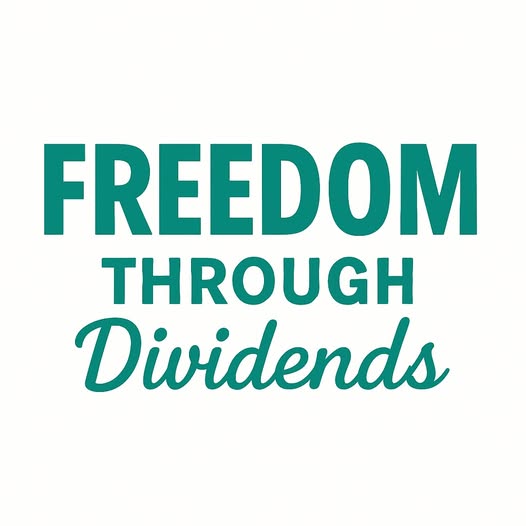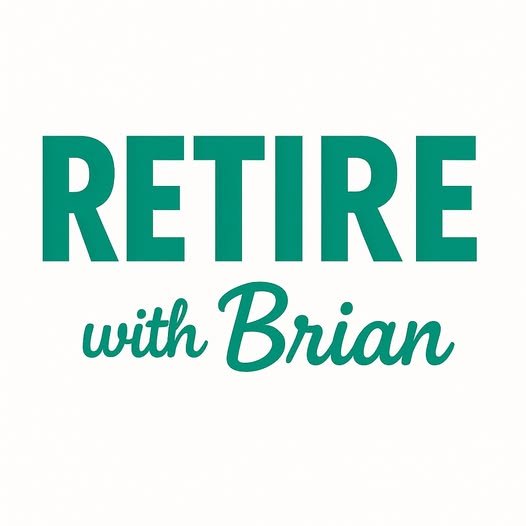Are you looking for a solid way to make money from your investments? The financial world is always changing. Investors are searching for long-term investment strategies to reach their financial goals.
Exchange-Traded Funds (ETFs) are becoming more popular. They offer a mix of investments and flexibility. But can a high yield ETF investment strategy really bring consistent profits?
When you dive into ETF investing, knowing the good and bad is key. By learning about high yield ETFs, you can make smart choices for your portfolio.
Key Takeaways
- Understand the basics of ETF investing and its growing popularity.
- Learn how a high yield ETF investment strategy can generate consistent returns.
- Discover the importance of diversification in ETF portfolios.
- Explore the potential benefits and risks associated with high yield ETFs.
- Gain insights into making informed decisions about your ETF investments.
Understanding High Yield ETFs
High yield ETFs have changed the way we invest for income. They are popular among those looking to boost their returns. To get the most from these ETFs, it’s important to know how they work and what they offer.
What Defines a High Yield ETF
A high yield ETF aims to give investors more income than usual. They invest in a mix of assets that pay high dividends or interest. The main goal is to provide regular income to investors.
These ETFs come in various types. Some focus on stocks that pay dividends, while others invest in bonds or real estate trusts.
How High Yield ETFs Generate Returns
High yield ETFs make money mainly from the income of their assets. For example, dividend-focused ETFs earn from stock dividends. Bond ETFs get income from bond interest.
| ETF Type | Primary Income Source | Typical Underlying Assets |
|---|---|---|
| Dividend ETFs | Dividend Payments | Dividend-paying stocks |
| High-Yield Bond ETFs | Interest Payments | High-yield corporate bonds |
| REIT ETFs | Rental Income and Property Appreciation | Real Estate Investment Trusts |
The Evolution of Income-Focused ETFs
The demand for income in a low-interest world has driven the growth of income-focused ETFs. These ETFs have evolved, offering a wide range of strategies. Today, investors can find high yield ETFs that match their income goals and risk levels.
The Benefits of High Yield ETF Investing
High yield ETFs are great for those wanting to increase their income. They offer a steady income stream, perfect for passive income investing.
Diversification Advantages
High yield ETFs spread investments across different assets. This reduces risk and can increase returns. It’s a big plus for investors wanting to avoid big losses.
Lower Expense Ratios Compared to Mutual Funds
High yield ETFs are also cheaper. They have lower expense ratios than mutual funds. This makes them a good choice for those watching their costs.
Liquidity and Accessibility
These ETFs are easy to buy and sell. You can trade them all day, which is handy.
Trading Flexibility
This flexibility helps investors quickly adjust to market changes. It makes managing your portfolio easier.
Minimum Investment Requirements
Lastly, high yield ETFs often need less money to start. This makes them more open to more people.
| Benefits | Description |
|---|---|
| Diversification | Reduces risk by pooling funds across various assets |
| Lower Expense Ratios | Cost-effective compared to mutual funds |
| Liquidity and Accessibility | Allows for buying and selling throughout the trading day |
Potential Risks and Considerations

Exploring high yield ETFs is exciting, but knowing the risks is key. These investments can provide good income, but they also have risks. It’s important to understand and manage these risks.
Interest Rate Sensitivity
High yield ETFs, especially bond-focused ones, are sensitive to interest rates. When rates go up, bonds with lower rates can lose value. This affects the ETF’s worth. It’s crucial to grasp this for ETF portfolio construction.
Credit and Default Risks
These ETFs often hold lower-grade bonds, which are riskier. It’s important to check the creditworthiness of the issuers. This helps avoid big losses. Diversifying your investments is a good way to handle credit and default risks.
Market Volatility Impact
Market ups and downs can hit high yield ETFs hard, especially those tied to stocks. When the market is volatile, these ETFs can lose value. This could lead to losses if you need to sell your shares.
Sector-Specific Risks
Some high yield ETFs focus on specific sectors, like real estate or energy. These can face unique challenges. For example:
- Real estate ETFs can be hit by changes in property markets and interest rates.
- Energy sector ETFs may be affected by oil price changes and energy policies.
When building your income-generating ETFs portfolio, think about these risks. Aim for a balanced mix that fits your investment goals and risk level.
Types of High Yield ETFs Worth Considering
To build a strong high yield ETF investment strategy, it’s key to look at the different types out there. You can spread out your investments by picking from a range of ETFs. These cater to various goals and how much risk you’re okay with.
Dividend-Focused Equity ETFs
These ETFs focus on stocks that pay out dividends regularly. This gives investors a steady income. They’re great for those looking for yield without too much risk.
U.S. Dividend Aristocrat ETFs
These ETFs track companies that have raised their dividends for 25 years or more. They’re known for their stability and reliability.
International Dividend ETFs
International Dividend ETFs let you invest in dividend-paying stocks from around the world. They help diversify your portfolio and might offer higher yields.
Bond and Fixed Income ETFs
Bond and fixed income ETFs invest in bonds. They provide regular income and help diversify your portfolio. They’re available for different risk levels and time frames.
Corporate Bond ETFs
Corporate Bond ETFs focus on bonds from companies. The yields reflect the creditworthiness of the companies issuing the bonds.
Municipal Bond ETFs
Municipal Bond ETFs invest in bonds from local governments and municipalities. They often offer tax-exempt income to investors.
Real Estate Investment Trust (REIT) ETFs
REIT ETFs let you invest in real estate without owning physical properties. They provide a diversified income stream.
Preferred Stock ETFs
Preferred Stock ETFs invest in preferred shares. These shares combine stock and bond features. They offer a higher claim on assets and dividends than common stock.
Here’s a quick rundown of the high yield ETFs we’ve discussed:
| ETF Type | Investment Focus | Key Benefit |
|---|---|---|
| Dividend-Focused Equity ETFs | Stocks with consistent dividend payments | Regular income stream |
| Bond and Fixed Income ETFs | Various types of bonds | Diversification and regular income |
| REIT ETFs | Real estate investment trusts | Exposure to real estate market |
| Preferred Stock ETFs | Preferred shares | Higher claim on assets and dividends |
Developing a High Yield ETF Investment Strategy
A good high yield ETF investment plan is vital for reaching your financial goals. To make such a plan, you must think about several key factors. These factors will shape your investment choices.
Defining Your Income Goals
Your income goals are the base of your high yield ETF strategy. You need to figure out how much income you want from your investments and when. This will help you pick the right ETFs for your financial needs.
Assessing Your Risk Tolerance
Knowing your risk tolerance is crucial in high yield ETF investing. Your risk tolerance will help decide how to spread your investments. It’s about balancing risk and potential gain.
Creating a Balanced Portfolio Allocation
A balanced portfolio is key for managing risk and getting the best returns. In your high yield ETF portfolio, you can use different strategies for allocation.
Core-Satellite Approach
The core-satellite approach means having a core of diversified ETFs and adding specialized ETFs. This mix balances stability with the chance for higher returns.
Yield-Focused Allocation Models
Yield-focused models focus on investments with high yield potential. This includes dividend-focused equity ETFs, high-yield bond ETFs, or REIT ETFs. It’s important to check if the yield is sustainable and to understand the risks.
To show different strategies, here’s an example:
| Allocation Strategy | Core Holding | Satellite Holding |
|---|---|---|
| Conservative | 60% Diversified Bond ETF | 40% Dividend-Focused Equity ETF |
| Moderate | 50% Diversified Equity ETF | 50% High-Yield Bond ETF |
| Aggressive | 40% REIT ETF | 60% Preferred Stock ETF |
By setting clear income goals, understanding your risk tolerance, and balancing your portfolio, you can craft a high yield ETF strategy that suits you.
Step-by-Step Portfolio Construction Process
Building a high yield ETF portfolio needs a clear plan. It starts with deep research and picking the right ETFs. Knowing what makes a good ETF investment strategy is key.
Research and Selection Criteria
The base of a strong ETF portfolio is choosing the right ETFs. You need to look at things like expense ratios and past performance.
Analyzing Expense Ratios
Expense ratios affect your returns over time. Look for ETFs with low expense ratios. For example, an ETF with a 0.10% expense ratio costs $10 a year for every $10,000 invested.
Evaluating Historical Performance
Past performance doesn’t guarantee future results, but it’s useful. Check how an ETF has done in different market times. This helps you make better investment choices.
| ETF | Expense Ratio | 1-Year Return | 3-Year Return |
|---|---|---|---|
| ETF A | 0.05% | 8% | 12% |
| ETF B | 0.20% | 7% | 10% |
| ETF C | 0.15% | 9% | 11% |
Position Sizing and Diversification
After picking your ETFs, decide how much to invest in each. Spread your money across different types of investments to lower risk.
A good mix might include bond ETFs, dividend-focused equity ETFs, and REIT ETFs. This way, you can handle market ups and downs better.
Entry Timing Considerations
Timing your entry into the market is tricky. But, there are ways to make it easier. Try dollar-cost averaging, where you invest the same amount regularly, no matter the market.
This method can help you manage market risks and build your portfolio over time.
Tax-Efficient High Yield ETF Investing
When you start investing in high yield ETFs, knowing about taxes is key to getting the most out of your money. ETFs, or Exchange-Traded Funds, have special tax benefits. These benefits can help you keep more of your earnings.
Understanding ETF Tax Advantages
ETFs are often better than mutual funds when it comes to taxes. This is because they have a pass-through tax structure. This means they usually don’t have to sell securities to meet investor redemptions. This can help avoid capital gains taxes.
Key Tax Benefit: ETFs tend to have lower turnover rates. This leads to fewer capital gains distributions. This makes them more tax-efficient.
Strategic Account Placement
To make your high yield ETFs even more tax-efficient, think about where to place them. Different accounts can offer different tax benefits.
Tax-Advantaged Accounts
Putting your high yield ETFs in tax-advantaged accounts like 401(k), IRA, or Roth IRA can be smart. For example, traditional IRAs grow tax-deferred. Roth IRAs offer tax-free growth under certain conditions.
Taxable Account Strategies
In taxable accounts, it’s wise to choose tax-efficient investments. High yield ETFs that aim to minimize capital gains are good choices. You can also use these accounts to hold tax-loss harvested investments. This can help offset gains from other investments.
Tax-Loss Harvesting Opportunities
Tax-loss harvesting is a strategy to sell down securities that have lost value. This can help offset gains from other investments. High yield ETFs can be part of this strategy. As a financial expert noted,
“Tax-loss harvesting is a powerful strategy for managing taxes in a volatile market.”
By using these tax strategies, you can improve the after-tax returns of your high yield ETF investments. This means you get to keep more of your money.
Real-World Examples of Successful High Yield ETFs
Let’s look at some real-world success stories of high yield ETFs. These examples show how these investments can be effective.
Top-Performing Dividend ETFs
Dividend ETFs are popular among those looking for income. The Vanguard Dividend Appreciation ETF (VIG) is a great example. It focuses on stocks that raise their dividends over time.
High-Yield Bond ETF Case Studies
High-yield bond ETFs offer high returns for those who can handle more risk. The iShares iBonds Dec 2025 AMT-Free Muni Bond ETF (IBMN) is a good choice. It balances high yield with careful risk management.
REIT ETF Performance Analysis
REIT ETFs let investors add real estate to their portfolios. The Vanguard Real Estate ETF (VGSIX) is a top pick. It gives broad access to the real estate market.
Sector-Specific REIT ETFs
Sector-specific REIT ETFs focus on certain real estate areas. They offer targeted exposure to specific market segments.
| ETF Name | 1-Year Return | Expense Ratio |
|---|---|---|
| Vanguard Dividend Appreciation ETF (VIG) | 8.5% | 0.08% |
| iShares iBonds Dec 2025 AMT-Free Muni Bond ETF (IBMN) | 4.2% | 0.18% |
| Vanguard Real Estate ETF (VGSIX) | 7.1% | 0.12% |
By studying these examples, investors can better understand how to use high yield ETFs in their portfolios.
Monitoring and Rebalancing Your ETF Portfolio

Investors in high yield ETFs must keep a close eye on their portfolios. This helps them stay on track with their financial goals. It also lets them adjust to changes in the market.
Key Performance Metrics to Track
It’s important to watch certain metrics to see how your ETF portfolio is doing. These metrics show if your investments are profitable and healthy.
Yield Measurements
Yield measurements are key. They show how much income your investments are making. By tracking yield, you can see if your investment is doing well and decide if you need to make changes.
Total Return Considerations
But it’s not just about yield. Total return considerations are also crucial. Total return includes income and any increase in the value of your investment. This gives you a full picture of how your investment is performing.
When and How to Rebalance
Rebalancing your ETF portfolio is key to keeping your investments in line. Market changes can make your investments stray from your target. This can increase risk or lower returns.
To rebalance, check your portfolio regularly. You might need to sell some assets or buy others. This keeps your investment strategy on track.
Adjusting to Changing Market Conditions
Markets can change fast, affecting your ETF investments. Keeping up with economic trends and market changes helps you adjust your portfolio. This ensures it stays on track for long-term success.
Conclusion: Maximizing Your High Yield ETF Success
Exploring high yield investments means building a diverse ETF portfolio. This is key to reaching your financial targets. Knowing the ups and downs of high yield ETFs helps you make smart choices. These choices should match your risk level and income goals.
Building a strong ETF portfolio takes planning, watching, and making smart moves. First, set clear income goals and understand your risk comfort. Then, spread your investments wisely. This way, you can get the most from your high yield ETFs.
For lasting success with high yield ETFs, keep an eye on how they’re doing. Adjust your portfolio when needed. This helps you keep up with market changes and reach your financial goals.
By using the tips from this article, you’re ready to make the most of high yield ETFs. You’ll craft an investment plan that fits your specific needs.
FAQ
What are high yield ETFs, and how do they work?
High yield ETFs are funds that aim to give investors high income. They invest in stocks that pay dividends, bonds with high yields, or real estate trusts. This way, investors can get income from a variety of sources with just one investment.
What are the benefits of investing in high yield ETFs?
Investing in high yield ETFs offers several benefits. They provide diversification and are often cheaper than mutual funds. They also offer liquidity and the chance for regular income. Plus, they can be traded easily, allowing investors to quickly react to market changes.
What risks are associated with high yield ETF investing?
High yield ETFs carry risks like interest rate sensitivity and credit risk. For example, bond ETFs might lose value if interest rates go up. Also, ETFs focused on high-yield bonds or stocks might face credit issues or dividend cuts, affecting their income and performance.
How do I choose the right high yield ETF for my investment goals?
To pick the right high yield ETF, think about your income goals and risk tolerance. Look at the ETF’s holdings, expense ratio, and past performance. Also, consider how it fits into your overall investment plan. It’s key to evaluate the ETF’s yield, total return, and any risks related to its focus.
Can high yield ETFs be used for long-term investment strategies?
Yes, high yield ETFs are great for long-term strategies. They offer a steady income and might be less volatile than growth investments. Adding them to a diversified portfolio can help achieve long-term financial goals while managing risk.
How do I monitor and rebalance my high yield ETF portfolio?
Keep an eye on your high yield ETF portfolio’s performance and yield. Rebalance it if its asset mix changes or if your goals or risk tolerance shift. This ensures your investment mix stays optimal, which can be done regularly or when market conditions change.
Are there tax implications I should be aware of when investing in high yield ETFs?
Yes, taxes are important when investing in high yield ETFs. ETFs are tax-efficient, but the income they generate is taxable. Consider the tax implications of your investments. Holding tax-efficient investments in taxable accounts and less tax-efficient ones in tax-advantaged accounts can help.
How do high yield ETFs fit into a passive income investing strategy?
High yield ETFs are ideal for passive income investing. They offer regular income with little effort. By investing in a mix of high yield ETFs, you can create a steady income stream. This income can support your living expenses or be reinvested to grow your wealth.

